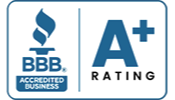Do You Need to Rebalance Your Portfolio?
December 07, 2021
After a second year of a bull market in stocks, the end of the year could be a great time to rebalance your portfolio. However, be sure to manage the levels of risk in your portfolio, which is often a major concern for those in or near retirement. Here’s what you need to know.
With 2022 around the corner, now is the perfect time to tune up your stock portfolio. As we close out 2021, most people are in the midst of figuring out what they need to change as they enter the new year. As most people know, a new year calls for a fresh perspective.
When it comes to your retirement income planning, investing well requires you to get your head around some pretty unique (and sometimes counterintuitive) concepts. Common wisdom tells us that we should periodically rebalance our investment portfolio, but it might not always make sense.
Advantages of Rebalancing
Part of the purpose of an asset allocation is to dilute the impact of each asset class by limiting both the upside and downside impact of the investments. But, when a particular investment grows in value faster than the other investments, you are exposed to more risk than you originally intended. Rebalancing your portfolio returns your investments to your original risk tolerance and reduces the risk that your portfolio will drop in value.
Disadvantages of Rebalancing
Rebalancing is an uninformed strategy that assumes that high-flying investments have nowhere to go but down or, at best, have no room for further growth. But, past performance does not predict future results. Rebalancing also conflicts with other common strategies, such as buy-and-hold and harvesting losses to offset capital gains. The decision to rebalance should be forward-looking, based on expectations about where the stock and bond markets will head in the future.
Be Responsible with your Investments
Your investments should be in line with your financial goals, starting with where you are currently sitting at and where you’d like to be down the line. As long as you are on your path towards your goals, you should try not to let emotions get involved when you see the latest downward trend. When investing in the stock market, the responsibility is on you to make the most of the information available to you.
A great way to do some internal housekeeping is to tally up the total dollar value of the stocks, bonds and cash you hold in your taxable and retirement accounts. If you own a fund that invests in both stocks and bonds, such as a balanced fund or target-date fund, review the fund’s latest holdings to see how much it holds in each major asset class. To find out your current asset mix, calculate the percentage of each asset class relative to your total portfolio.
There is a lot of internal and external environment that influences equity prices. Equity prices today are linked to expectations of profits for tomorrow. Sectors like consumer technology, financial services, healthcare, technology services, infrastructure could continue to see new investments each year. But again, you must…
Do Your Research
Overall, one of the most overlooked aspects of updating your portfolio or getting into stocks in general, is doing your research. Looking at a range of factors to evaluate a stock, and then decide whether it deserves attention in your portfolio. Stocks are considered long-term investments because they carry quite a bit of risk; you need time to weather any ups and downs and benefit from long-term gains.
Key steps in evaluating any stock includes:
- Gathering stock materials: Quantitative research begins with pulling together a few documents that companies are required to file with the U.S. Securities and Exchange Commission. These include Forms 10-K and 10-Q.
- Narrow Your Focus: Zero in online items such as revenue, net income, EPS and ROAs to become familiar with the measurable inner workings of a company.
- Turn to Qualitative Research: This reveals the black-and-white financials of a company’s story to give you a truer picture of its operations and prospects.
A majority of the population needs to understand that financial markets move in cycles. Profitability of companies influences stock markets. Fixed income markets move on the back of the inflation and interest rate trends. You need to keep yourself informed and make calculated decisions. At the end of the day, before you buy any stock, you want to build a well-informed narrative about the company and what factors make it worthy of a long-term partnership.
Tweaking and Rebalancing
If you determine you need to make some changes to your current portfolio from your research, you may want to go back to your saved portfolio and do some amendments. Conventional wisdom holds that there are two ways to rebalance–either you can rebalance on a set schedule, say, every December, or you can rebalance whenever your portfolio gets dramatically out of whack with your targets.
Rebalancing can require that you sell, so it’s important to factor in rebalancing efforts on your tax-sheltered accounts to help reduce tax costs. In some cases, the alterations you need to make might be obvious–if you’re heavy on bonds, for example, trimming your bond funds should resolve the problem. Getting to the bottom of other bets might take a little more research. This is where advice from a financial professional can help.
Hire A Trusted Financial Advisor
When planning your financial future, it’s always a good idea to seek professional guidance. A financial advisor should be the first member that you add to your team. With the right financial advisor, you can ask them any money-related issues and gain answers to your most sought-after financial questions. Your advisor is there to help you succeed on your financial journey. Some choose to delay this decision for a multitude of reasons. If you are not into finance, it is good to discuss the standards of all possible investment avenues with your financial professionals.
Another part of internal housekeeping would be to keep your personal finances in check. You should discuss your insurance needs and check if the health insurance plan you are currently enrolled in is adequate for you. The same should be done with your life insurance policy. Your life insurance should comfortably cover any liabilities. In short, these housekeeping tips must be a regular feature for all things finance. Your financial advisor will help you with all of the things mentioned above in order to organize your finances in a simple manner.
Final Thoughts
Maintaining ideal levels of risk and the correct asset allocation is a critical component of any long-term financial plan. Taking the time to rebalance your portfolio on a regular basis can help achieve both these goals. Meeting with an advisor to perform regular maintenance now may help you avoid major headaches during the next market correction.







Leave a Reply
Want to join the discussion?Feel free to contribute!